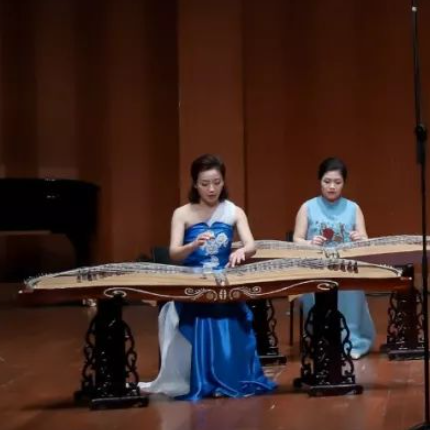The structure of butterfly kite
Since its birth, the butterfly zheng has been in the process of continuous improvement, and its shape and structure have undergone many subtle changes. The author will mainly introduce the foldable butterfly zheng successfully trial-produced in 2007. This butterfly zither is designed to be folded on the basis of the commonly used butterfly zither, so it has both the shape of the commonly used butterfly zither and the latest design concept.

The butterfly-style zheng has a total length of about 208 cm (in the non-folded state). There is a Zhongyue Mountain in the middle of the panel. The left zheng is on the left of Zhongyue Mountain, and the right zheng is on the right. The left and right zheng are about 104 cm each; The right zither is played on the left side of the piano, so the left and right zithers are equivalent to two zithers with opposite heads; the tails of both sides are "S" shaped, and the overall shape is like a butterfly.
When I was studying at the Shanghai Conservatory of Music, the author once listened to my tutor, Professor He Baoquan, describe the process of forming the concept of butterfly zheng. According to Mr. He, during his band rehearsal as a student, he often encountered situations that required temporary tuning, which was a great test for guzheng players. To this end, he came up with a way to place two zithers of different tonality in a way that the headstocks are staggered and stacked, so that they can be played more conveniently and quickly. This arrangement is the source of inspiration for the relative form of the butterfly zither headstock.
Butterfly zheng has a total of 49 strings (25 strings on the left zheng, 24 strings on the right zheng), all of which are metal strings wrapped with nylon wire; 41 strings (21 strings on the left zheng, 20 strings on the right zheng) are crossed on Zhongyue Mountain Winding; there are also eight "half-tone Yueshan pillars", four on each of the panels on the left and right sides of the zither, one on each side of the zither in each octave range, and one string on each
All strings are arranged in a pentatonic scale symmetrically staggered and supplemented with phonemes, forming a phoneme arrangement of twelve semitones. The range is D-d3, with a total of four octaves.
There are strings under each string (still movable), the highest size is about 57 cm, and the minimum size is about 46 cm. Since the distance between the "Hatone Mountain Pillar" and its adjacent strings is too close, it is easy to scratch the bridge corresponding to the "Hatone Mountain Pillar" when pressing and sliding its adjacent strings. Therefore, the bridge has also been improved, and its shape and style are different from Ordinary piano code.
In 2007, Professor He Baoquan developed a folding butterfly zheng in order to improve the shortcomings of the butterfly zheng, which is too long and inconvenient to carry. The design principle of the foldable butterfly zheng is to use the cross-type Zhongyue Mountain to realize the folding of the double zheng, that is, based on the number of strings, the length of the middle section of the Zhongyue Mountain is divided into 41 equal parts, and the Zhongyue Mountain with 21 strings on the left zheng is placed on the Zhongyue Mountain. The left zheng panel is connected, and the 20-string Zhongyue Mountain on the upper right zheng is connected to the right zheng panel; when the zither is unfolded, the Zhongyue Mountains on both sides intersect to form a complete Zhongyue Mountain, and when it needs to be folded, the Zhongyue Mountain is divided Point, the Zhongyue Mountain, which originally intersected together, is separated to the left and right sides.
There is a string hole at the top of Zhongyue Mountain, and the two sides of Zhongyue Mountain must be separated when winding; the string hole on the "Halftone Mountain Pillar" is located on the panel and next to the "Halftone Mountain Pillar".
The zheng resonance boxes on both sides are connected but not connected (the two sides of the non-folding butterfly zheng resonance boxes are connected and connected), and there are fixed sound beams and adjustable sound columns in the boxes.
 渝公网安备 50010702504639号
渝公网安备 50010702504639号